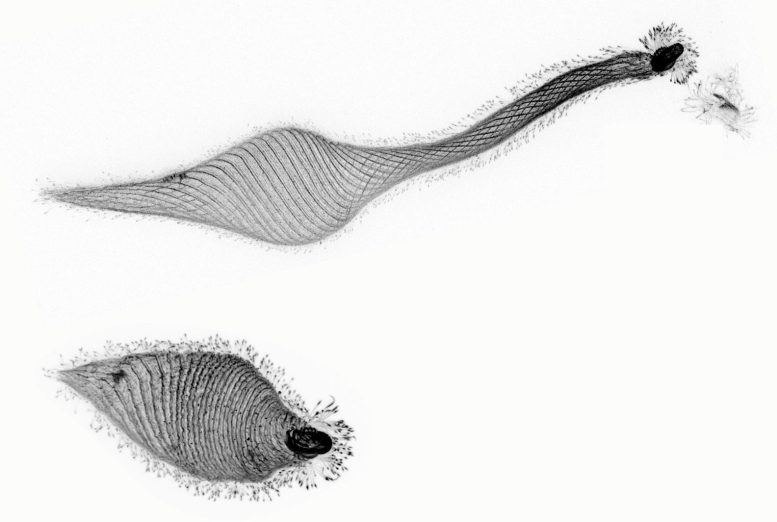
Researchers have discovered that the microorganism Lacrymaria olor can extend its neck up to 30 times its length through an origami-like cellular architecture. This ability is facilitated by a folded cell membrane, offering insights potentially useful in robotics and materials science.
Understanding Microbial Mechanics
For a tiny hunter of the microbial world that relies on extending its neck up to 30 times its body length to release its deadly attack, intricate origami-like cellular geometry is key.
This geometry enables the rapid hyperextensibility of the neck-like protrusion, for single-celled predator Lacrymaria olor, according to a new study in the journal Science. The findings not only explain L. olor’s extreme shape-shifting ability but also hold the potential for inspiring innovations in soft-matter engineering or the design of robotic systems.
Dynamic Changes in Single-Celled Protists
Single-celled protists are well known for their ability to perform dynamic morphological changes in real-time, including large transformations in cell architecture. These organisms undergo large strains and strain rates to accomplish such feats. One such protist, L. olor, extends a neck-like protrusion to catch prey at a distance. This tiny, 40-micron single-celled creature can repeatedly stretch this protrusion up to 1200 microns in less than 30 seconds and then retract it just as quickly.
Microscopic Observations Reveal Origami Structures
However, the underlying mechanisms that produce L. olor’s extreme hyperextensibility remain unknown. To observe these mechanics at the sub-cellular level, Eliott Flaum and Manu Prakash used a combination of live imaging, confocal, and transmission electron microscopy. They discovered that an origami-like layered cortical cytoskeleton and membrane architecture enables L. olor’s rapid extension and contraction.
Origami Architecture in Cellular Function
According to the findings, the cell membrane is folded into 15 contagious pleats that, together, form a curved-crease origami that can sequentially unspool for rapid and repeatable hyper-extensions of the neck. This intricate folding scheme is scaffolded on a helicoidal structure of microtubule filaments that guides the membrane creases to ensure fast and efficient unfolding and refolding during shape changes.
To better understand the dynamics involved, Flaum and Prakash developed a mechanical paper model that mimics L. olor’s curved crease origami architecture.
In a Perspective, Leonardo Gordillo and Enrique Cerda discuss the findings in greater detail.
For more on this research, see Stanford Scientists Unveil Cellular Origami in Microscopic Predators.
References:
“Curved crease origami and topological singularities enable hyperextensibility of L. olor” by Eliott Flaum and Manu Prakash, 7 June 2024, Science.
DOI: 10.1126/science.adk5511
“A tiny, long-distance hunter: Lacrymaria olor cytoskeleton and membrane “origami” enables rapid cell hyperextension” by Leonardo Gordillo and Enrique Cerda, 6 June 2024, Science.
DOI: 10.1126/science.adn9351